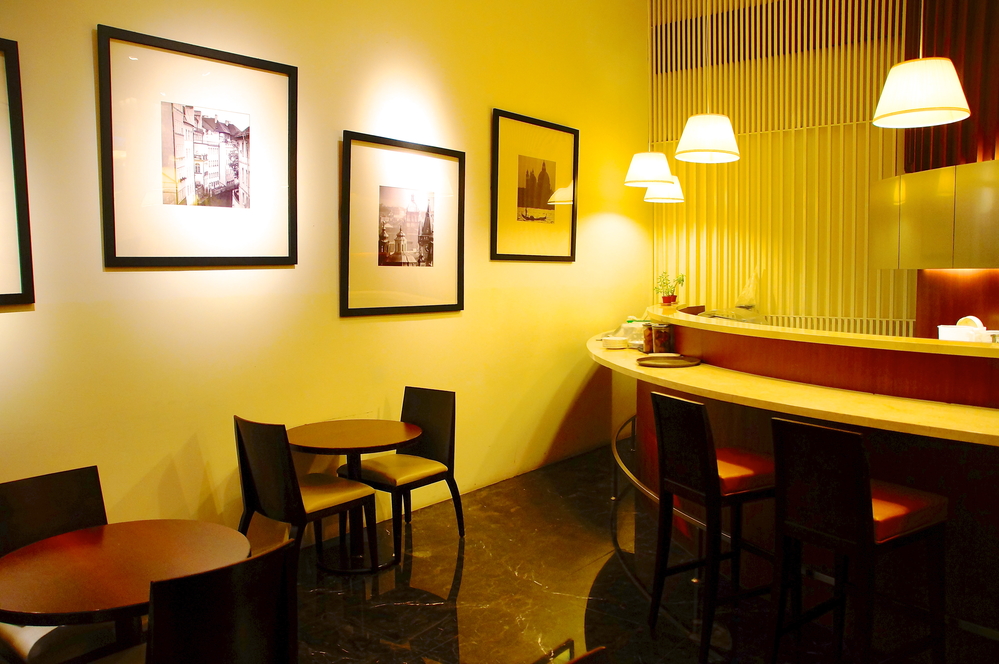Instagrammable Restaurants Islamabad: Picture-Perfect Dining Knowledge
Instagrammable Restaurants Islamabad: Picture-Perfect Dining Knowledge
Blog Article
Savor Genuine Eastern Cuisine With a Pan-Asian Spin for a Culinary Journey
Beginning on a cooking trip via genuine Asian cuisine, improved with a Pan-Asian spin, provides an one-of-a-kind chance to check out the rich tapestry of tastes that define the area's diverse cooking customs. As you ponder these luring meals, consider the cultural narratives and historic influences that form them, each bite using a story waiting to be discovered. Chinese food Islamabad.

Discovering Pan-Asian Flavors
In the realm of international gastronomy, Pan-Asian food stands apart for its exceptional variety and the harmonious interaction of flavors from various Oriental cultures. This cooking method celebrates the distinct active ingredients and abundant customs found across the continent, producing a tapestry of preferences that is both rewarding and fascinating. Secret to Pan-Asian food is its ability to stabilize contrasting flavors-- pleasant, salty, spicy, and sour-- while highlighting the freshness and top quality of each component.
From the umami-rich soy sauce of Japan to the fiery chili peppers of Thailand, Pan-Asian cuisine supplies a considerable palette of flavors. These elements are usually integrated in inventive methods, enhancing recipes with layers of complexity. For instance, making use of aromatic herbs such as lemongrass and cilantro, common in Vietnamese and Thai cuisine, includes a rejuvenating illumination to recipes, while the incorporation of coconut milk supplies a luscious, rich texture.
The emphasis on fresh fruit and vegetables and fragrant spices makes sure that each dish is not just a banquet for the palate however also for the senses. Pan-Asian food welcomes restaurants to start a culinary journey, checking out the substantial and varied landscapes of Asian gastronomy with every bite.
Fusion Meals to Try
While Pan-Asian food is celebrated for its conventional flavors, the modern cooking landscape is significantly welcoming blend meals that mix these traditional elements with influences from various other areas. This cutting-edge strategy not just honors the rich heritage of Asian cooking arts yet likewise introduces unique taste experiences that attract modern tastes.
An archetype of such a blend dish is the Korean-Mexican taco, where seasoned bulgogi beef is covered in a cozy tortilla, covered with kimchi and a hot gochujang-infused salsa. This combination marries the strong, savory flavors of Korea with the dynamic, fresh elements of Mexican cuisine. Likewise, sushi burritos have obtained popularity, amalgamating the fragile creativity of Japanese sushi with the passionate, hand-held comfort of a burrito, usually including combination ingredients like tempura shrimp and avocado with a drizzle of wasabi mayo.
One more notable dish is Thai curry ramen, which infuses the creamy, aromatic seasonings of Thai curry into the soothing brew of traditional Japanese ramen, producing an unified mix that tantalizes the detects. These blend dishes prolong beyond plain novelty; they represent a cooking dialogue in between cultures, encouraging exploration and technology in the globe of Pan-Asian cuisine.
Important Active Ingredients and Flavors
To really value Pan-Asian cuisine, one need to recognize the important components and flavors that create its foundation. This diverse culinary style attracts from an abundant tapestry of Eastern customs, using a harmonious mix of appearances and tastes. Key components include soy sauce, fish sauce, and oyster sauce, which present a savory umami depth necessary to Asian dishes. Complementary to these are rice vinegar and mirin, providing a fragile acidity and sweetness.
Aromatic aspects are pivotal, with lemongrass, ginger, and garlic being common throughout various Pan-Asian recipes. These components provide an aromatic base that enhances the intricacy of tastes. Spices such as star anise, cardamom, and cinnamon present heat and personality, echoing influences from regions like China and India.

Cooking Strategies and Tips
Grasping the art of Pan-Asian food calls for familiarity with its unique food preparation his response strategies, each contributing to the lively tapestry of tastes this culinary custom is commemorated for. Central to these approaches is the stir-fry, a rapid cooking method that maintains the dietary integrity and vibrant shades of active ingredients. Utilizing a wok, the stir-fry technique enables also warmth circulation, necessary for attaining the particular texture and flavor balance of Pan-Asian meals.
One more basic strategy is steaming, especially common in Chinese food. This gentle approach maintains the natural tastes and nutrients of components, making it suitable for seafood and vegetables. Dumplings, a precious staple, usually gain from steaming, leading to soft, delicious textures.
Grilling, additionally indispensable, imparts smoky depths to dishes such as Korean bulgogi or Japanese yakitori (pan asian restaurant Islamabad). This technique commonly entails seasoning ingredients, enabling tastes to pass through deeply before cooking over an open flame or warm plate
Last but not least, understanding the art of balancing tastes-- pleasant, sour, salty, bitter, and umami-- is important. Correctly layering these elements can boost a discover this meal from common to remarkable, offering a facility and satisfying cooking experience that symbolizes the essence of Pan-Asian food.
Dining Experiences Worldwide
Around the world, Pan-Asian food provides an unparalleled dining experience, celebrated for its abundant tapestry of tastes and lively discussions. This cooking sensation has transcended social boundaries, capturing the hearts and palates of food lovers worldwide. In worldwide cities fresh York, London, and Sydney, Pan-Asian restaurants act as fusions where cooking customs from Thailand, Japan, China, and past assemble, giving diners with an eclectic mix of recipes that highlight the region's variety.
The global charm of Pan-Asian food exists in its ability to provide both authenticity and development. Chefs masterfully wed typical ingredients such as lemongrass, soy sauce, and miso with contemporary techniques, resulting in meals that are both familiar and refreshingly brand-new. This blend permits restaurants to get started on a culinary journey that respects heritage while welcoming modernity.
Furthermore, eating experiences are elevated through attentively made settings that mirror the principles of Pan-Asian looks. From minimal Japanese-inspired insides to lively Thai-themed areas, each dining establishment uses a special atmosphere that matches the cooking offerings. Consequently, clients are not just eating a meal however partaking in a cultural experience, making Pan-Asian dining a really global phenomenon.
Conclusion
The expedition of Pan-Asian food supplies an extensive understanding of the detailed interplay of flavors and culinary traditions across Asia. By accepting combination meals such as Thai curry ramen and sushi burritos, the cooking trip not just highlights the flexibility of this article conventional components however likewise showcases ingenious modern-day methods. This gastronomic experience, enriched by cooking approaches and crucial spices, offers an unique opportunity to value the social variety and culinary artistry that specify Pan-Asian cuisine on an international scale.
Getting started on a culinary trip with authentic Eastern cuisine, boosted with a Pan-Asian twist, offers an one-of-a-kind opportunity to discover the rich tapestry of tastes that specify the region's varied culinary practices.In the realm of international gastronomy, Pan-Asian cuisine stands out for its impressive diversity and the unified interplay of tastes from various Eastern cultures. Trick to Pan-Asian cuisine is its capability to stabilize contrasting tastes-- sweet, salted, spicy, and sour-- while highlighting the freshness and top quality of each active ingredient.

Report this page